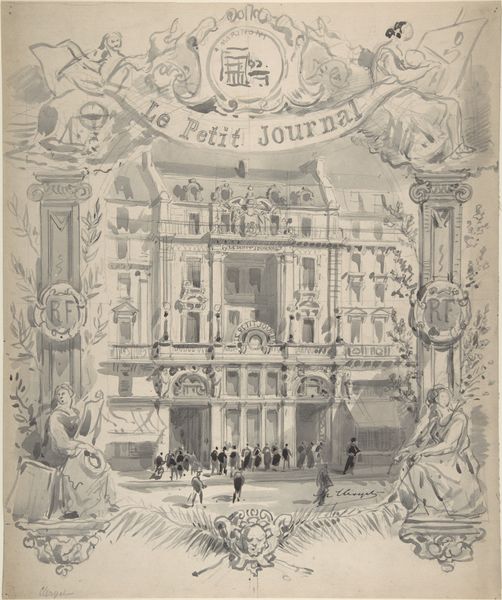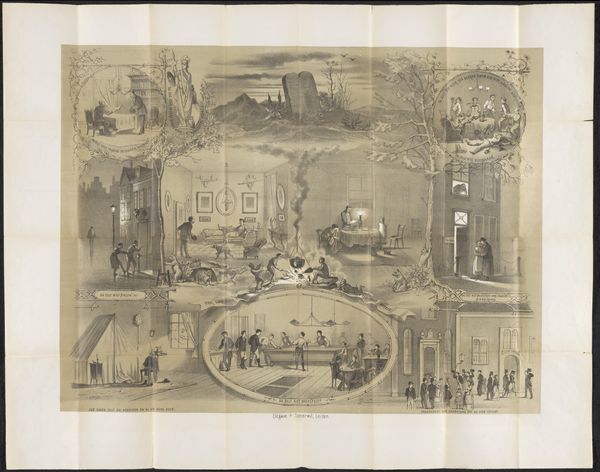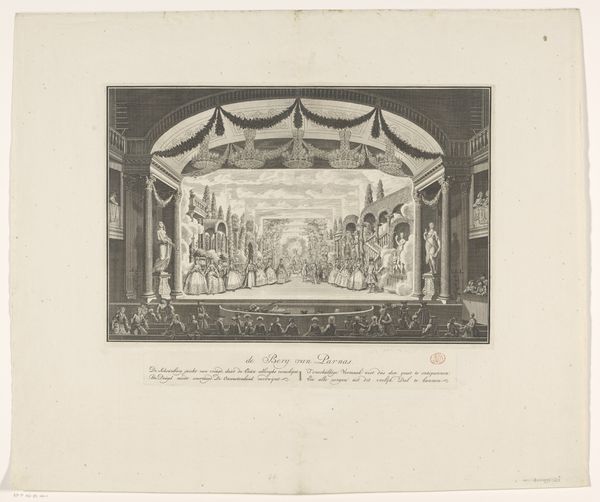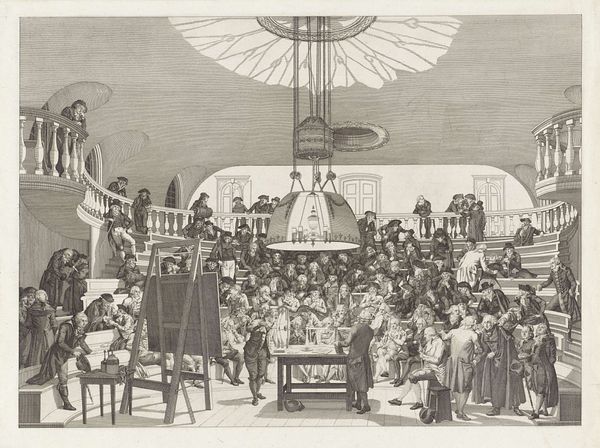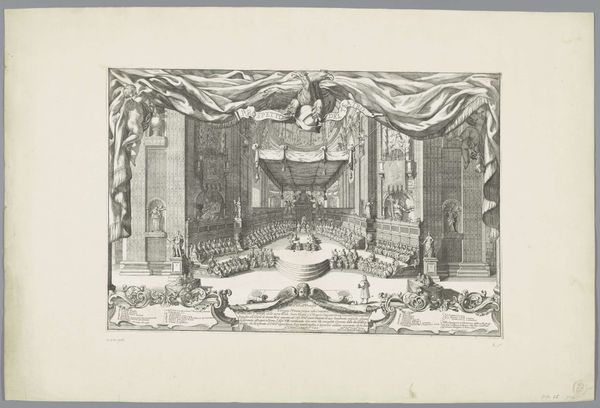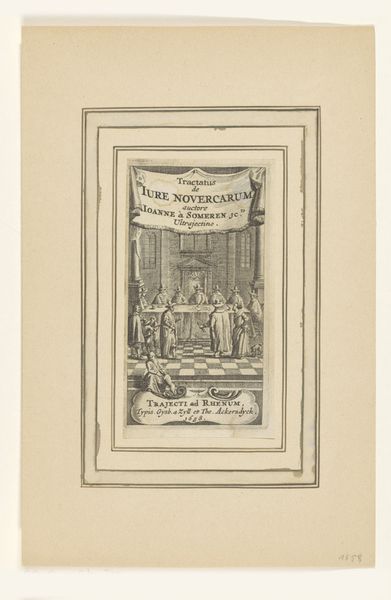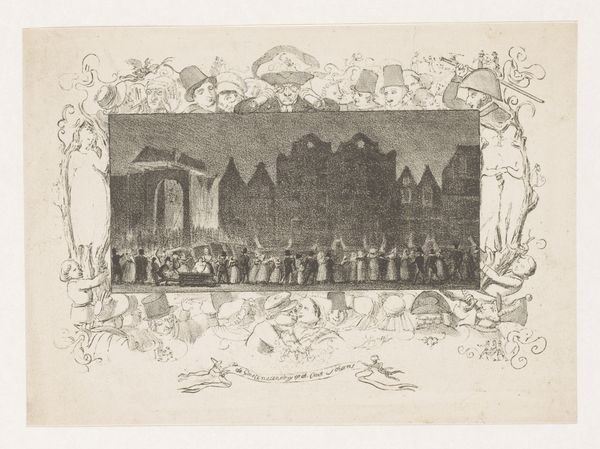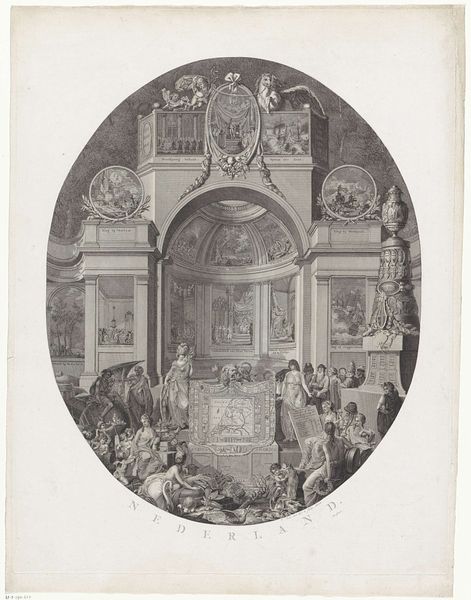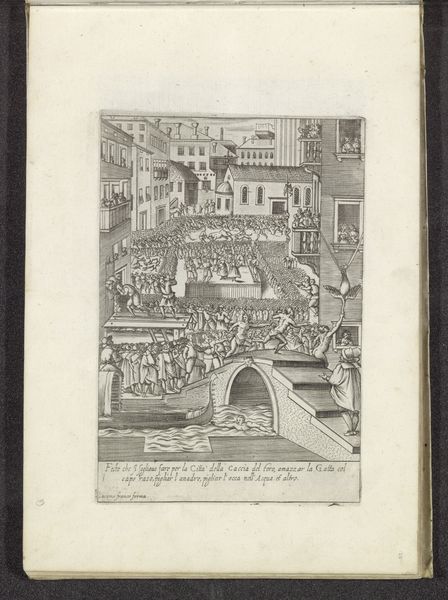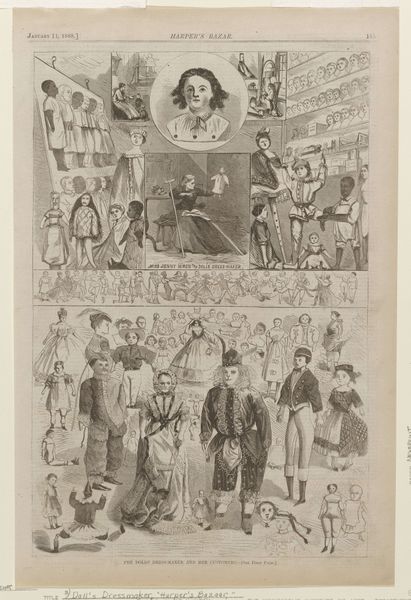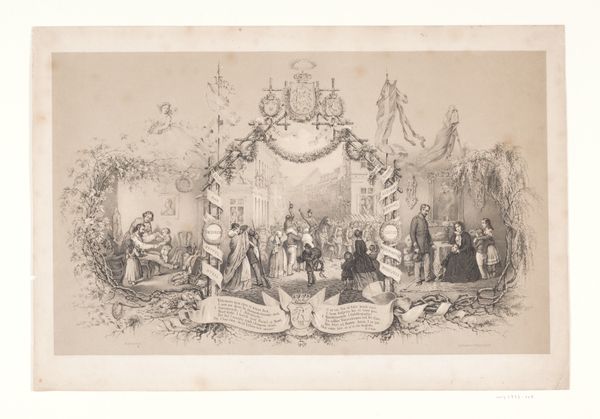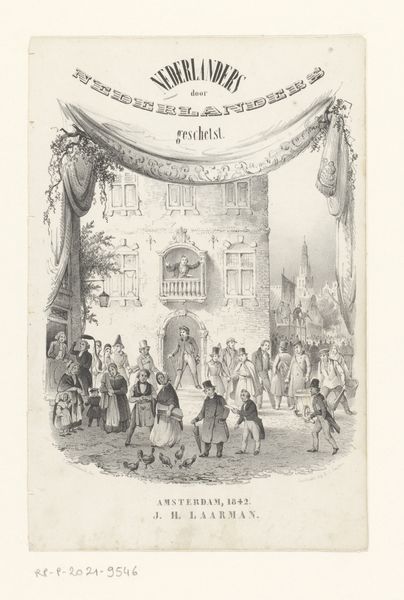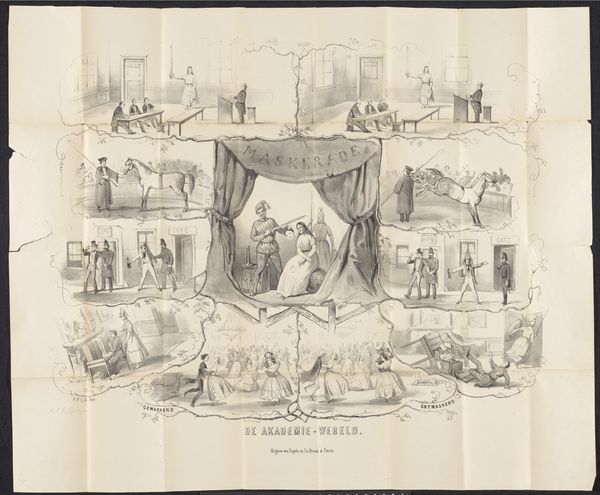
print, engraving
#
16_19th-century
#
narrative-art
# print
#
history-painting
#
academic-art
#
engraving
#
realism
Dimensions: height 321 mm, width 236 mm
Copyright: Rijks Museum: Open Domain
Editor: Here we have "Palace in Wolferdingen Where Prince Hendrik Died, 1879," created in 1879 and residing at the Rijksmuseum. It's an engraving by Smeeton-Tilly. It strikes me as a study in contrasts, moving from exterior to interior, from life to death. What structural elements draw your attention in this piece? Curator: Formally, I note the threefold division. This triptych-like structure establishes a clear hierarchy and progression. The artist's deliberate layering creates a visual narrative, guiding the viewer’s eye. Consider the lines formed by the architecture in the upper register; how do these rigid forms contrast with the fluidity of the draped figures in the central section? Editor: That's a great observation! The architectural lines are very rigid. The folds in the central section do soften it quite a bit. I also notice the differing textures achieved through the engraving. How do these varying textural depictions impact the reading of the work? Curator: Indeed, texture plays a significant role. The smooth surfaces in the upper register representing the palace exteriors contrast with the more complex patterns of the central and lower registers. Consider the stippling used to denote the fabric; these varied patterns almost suggest a form of coding—what meaning might we draw from this variance? What does it signify? Editor: That makes me think about how texture adds to the solemnity, that close attention to the patterns is almost ceremonial, in a way. Thanks for pointing that out, I would have glossed over that! Curator: Exactly. Examining the formal choices, even within the grayscale, deepens our grasp. Through close examination, we can unravel the complex and multi-layered themes, and more importantly, understand and relate to our past.
Comments
No comments
Be the first to comment and join the conversation on the ultimate creative platform.
